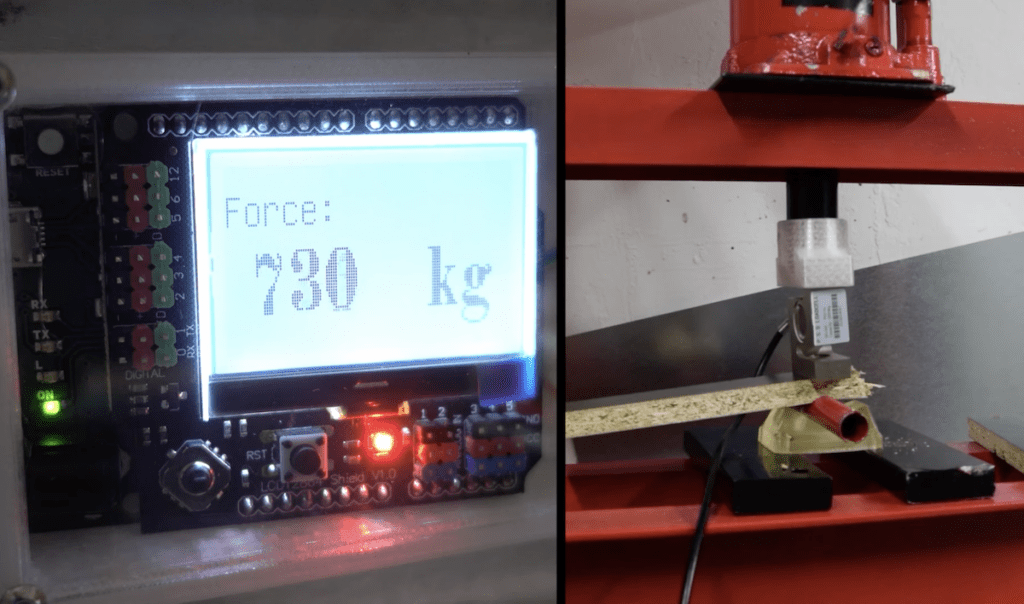Monitoring the force of a 20-ton hydraulic press

Material testing often comes down to breaking stuff and measuring how much force it took to do so. How a thing breaks is a result of different strength properties. There are many different types of strength, but mechanical engineers are most concerned with tensile, compressive, shear, and torsional strength. The easiest way to test compressive strength is to squish something with a very powerful press. Element14 Presents’ Clem Mayer purchased a 20-ton hydraulic press for that purpose and used an Arduino to measure its force.
Even if you don’t have any shop experience, you’ve probably seen a hydraulic press in action in one of those YouTube videos where they squeeze household objects until they explode in an entertaining way. This particular press can exert up to 20-tons of force, which is about as heavy as three elephants. The actual pressure depends on how much area that force applies to. To calculate the pressure at the time of failure, Mayer needs the contact area (which is easy to measure ahead of time) and the current amount of force that the press is applying. He collected the pressure data using an Arduino Leonardo and a load cell.
A load cell is a type of force sensor made of four strain gauges connected through a Wheatstone bridge. Strain gauges produce resistance that varies based on deformation, which correlates with force. Normally they are inaccurate and require cumbersome calibration, but the Wheatstone bridge uses four of them and some clever math to easily produce an accurate measurement. The output signal is weak, which is why an HX711 amplifier is necessary to make the signal usable. The Arduino measures the output from the HX711 using an ADC (analog-to-digital converter) that connects via I2C. It then displays the maximum reading on a small LCD screen. That reading should peak just before the tested object breaks, which tells Mayer the strength of the tested material.